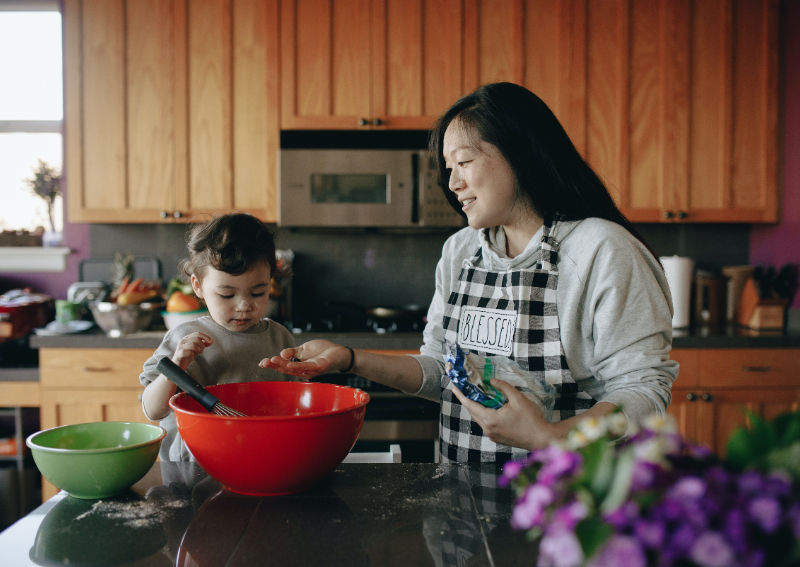Healthy meal ideas for 3-year-olds

Feeding a three-year-old can be a challenge, especially when trying to encourage healthy eating habits. Toddlers at this age are highly active and require balanced meals that meet their daily nutritional needs.
Creating healthy meal ideas for three-year-olds can leave many parents feeling overwhelmed and unsure of where to start.
In this blog post, we will share some healthy meal ideas for three-year-olds, along with tips and tricks to make mealtime a fun and positive experience.
The importance of a healthy diet for a toddler cannot be overstated. Proper nutrition is essential during this stage of development, as it supports the growth and development of the body and mind. A healthy diet also helps to boost the immune system, improving resistance to illness and disease.
However, getting a three-year-old to eat a balanced meal can be challenging due to their limited attention span and picky eating habits. Therefore, parents need to be creative in their meal planning to ensure their toddler receives the necessary nutrients.

When planning healthy meals for your three-year-old, it is important to include a variety of fruits and vegetables in their diet. Not only are they a great source of essential nutrients such as fibre, vitamins, and minerals, but they also help in developing a taste for healthy foods at a young age.
Try incorporating a variety of colourful fruits and vegetables to make meals more appealing to your child, such as blueberries, strawberries, oranges, bananas, spinach, carrots, and broccoli.
Encourage your child to try new fruits and vegetables by offering them in different ways, such as serving them raw, cooked, baked, or mashed.
Engaging your child in the meal preparation process such as letting them choose a vegetable from the store, or having them join you in the kitchen, can also help to excite and encourage them to try new healthy foods.

Choosing whole grains is an excellent choice for providing added fibre and essential nutrients in the meals of three-year-olds. When compared to refined grains, whole grains contain the entire grain, including the bran, germ, and endosperm.
This means they are packed with fibre, vitamins, and minerals that are crucial for the growth and development of young children.
Examples of whole grains that can be incorporated into meals for three-year-olds include oatmeal, brown rice, whole-grain bread, and quinoa.
These foods will not only provide necessary nutrients but also help children feel full for longer periods, which can help prevent overeating later on.
Encouraging the consumption of whole grains can be a simple but effective way to promote a healthy and balanced diet for young children.

When planning healthy meals for three-year-olds, it's important to ensure they are receiving adequate amounts of essential nutrients, including protein. Lean sources of protein such as chicken, fish, and beans are excellent options to incorporate into their meals.
Poultry, more specifically chicken, is an excellent source of protein that is not only lean but also contains essential vitamins and minerals like iron, zinc, and B vitamins.
Similarly, fish provides omega-3 fatty acids that foster brain development and boost cognitive function.
Beans are also high in fibre, protein, and iron; furthermore, they are low in fat and an excellent source of plant-based protein, making them an ideal addition to vegetarian or vegan meals.
By offering these lean sources of protein, you will provide your three-year-old with the essential building blocks they need to stay healthy and grow strong.

When it comes to choosing healthy meal ideas for three-year-olds, it's important to limit processed foods and sugary snacks.
While it may be tempting to reach for convenient snacks like chips and cookies, these options are often high in calories, unhealthy fats, and added sugars.
Instead, focus on providing your child with whole food options that are rich in essential nutrients such as fruits, vegetables, whole grains, lean proteins, and healthy fats.
For example, you could offer a variety of fresh fruit slices for a snack or homemade whole grain crackers with hummus or avocado as a healthy dip.
By limiting processed foods and sugary snacks, you can ensure that your child is receiving the nourishment they need to support their growth and development, while also promoting healthy eating habits that can last a lifetime.

As parents, one of the most important things we can do to encourage healthy eating habits in our children is to introduce them to a variety of different foods and flavours.
Many children become picky eaters, only wanting to eat the same things over and over again, but this can limit the nutrients they're getting and make mealtime a frustrating experience for everyone involved.
By encouraging your child to try new foods and flavours, you can help expand their palate and instil a love for healthy eating.
One easy way to do this is to offer a small amount of a new food alongside some of their favourite foods at mealtime.
You can also get them involved in the cooking process, letting them help choose ingredients or prepare simple dishes, which can make them more excited to try new things.
Remember, it can take several tries before a child starts to enjoy a new food, so don't give up if they don't love it the first time around.

When planning healthy meal ideas for three-year-olds, it is important to consider their portion sizes to prevent overeating. Offering small portions can help prevent overeating and create a healthy eating habits early on.
A snack should be no larger than a child's palm, while a meal should be about the size of their fist. As children grow, their portion sizes will also need to increase.
However, starting with smaller portions can help children learn to listen to their body's hunger cues and avoid overeating.
It is important to provide a variety of foods at each meal and snack to ensure that children are getting all the nutrients they need to develop and grow.
Incorporating a variety of colours, textures, and flavours can make meals more appealing to young children and help them develop a well-rounded palate.

Involving your child in meal planning and preparation is an effective way to promote healthy habits from an early age.
By allowing your child to participate in planning and preparing meals, you can increase their interest in healthy and nutritious foods.
You can offer them a sense of responsibility and autonomy while also teaching them about the food groups, where their food comes from, and how it benefits their body.
Encouraging your child to participate in grocery shopping, selecting recipes, and meal preparation can also help them develop important life skills, such as measuring ingredients and following recipes.
Moreover, involving your child in meal planning and preparation can help with picky eating habits and establish a positive relationship with food.
Promoting healthy eating habits in children is a crucial step towards ensuring their long-term health. It is essential to be patient and persistent when introducing nutritious food options to your child's diet.
Children may be initially resistant to trying new foods, but it is vital to continue offering healthy options consistently.
Encouragement and positive reinforcement can go a long way in promoting healthy eating habits. Offering a variety of colourful and flavourful healthy meals can make the transition to establishing a healthy diet more exciting for children.

Including your child in meal planning and preparation can also help to create a positive association with healthy eating.
Remember, establishing healthy eating habits is a gradual process, and staying patient and persistent in promoting healthy eating habits will lead to long-term health benefits for your child.
In conclusion, feeding a three-year-old can come with its own set of challenges, but with some creativity and thoughtfulness, providing them with healthy and nutritious meals can be achieved.
It's important to focus on a balanced diet that includes plenty of fruits, vegetables, whole grains, lean proteins, and healthy fats.
By involving them in meal planning and preparation, and presenting food in a fun and appealing way, parents can encourage their little ones to develop healthy eating habits that will benefit them throughout their lives.
ALSO READ: DIY: 10 fun and healthy snacks for a kid's birthday party
This article was first published in theAsianparent.